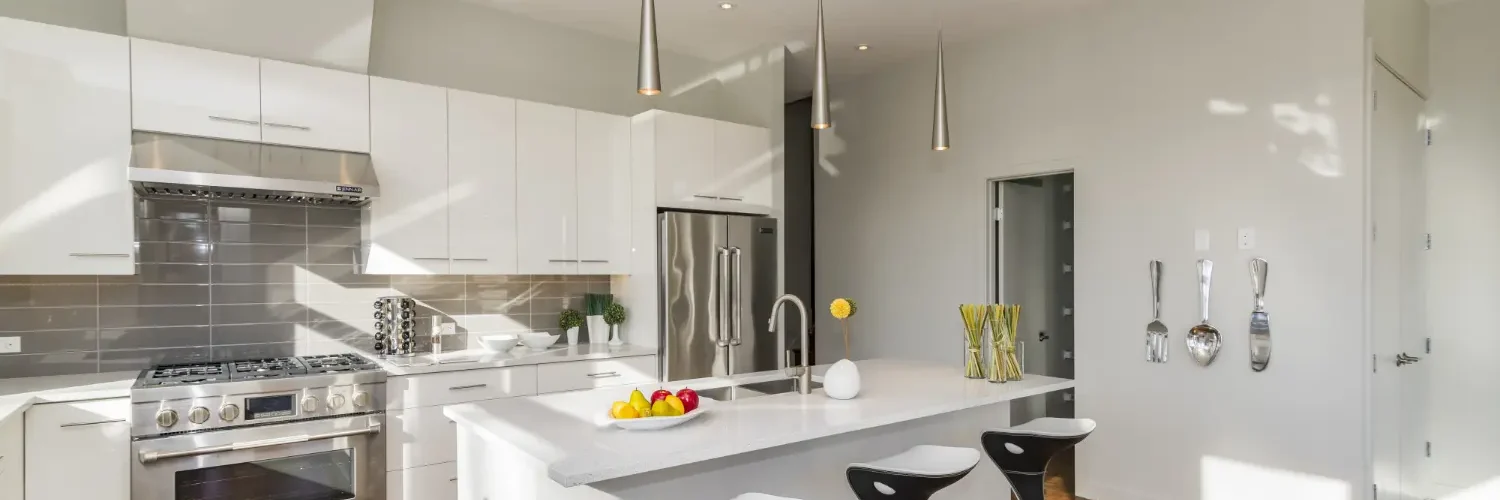In the realm of culinary spaces, the question of whether to opt for a dry or wet kitchen has long been a subject of passionate debate. Each of these kitchen styles boasts its own unique characteristics and benefits, making it difficult for homeowners to determine which one best suits their lifestyle and preferences. This article delves into the world of dry and wet kitchens, exploring their features, advantages, and drawbacks, ultimately helping you make an informed decision for your dream kitchen.
A Tale of Two Kitchens: Understanding the Concepts
The Dry Kitchen: Elegance Meets Functionality
Replete with panache and sophistication, the dry kitchen is a stylish space that emphasizes functionality and aesthetics. Often integrated with the living or dining area, it is designed for light meal preparation, serving, and entertaining guests. The dry kitchen features state-of-the-art appliances, ample storage, and an inviting ambiance that beckons visitors to gather around and engage in delightful conversations.
The Wet Kitchen: A Workhorse for Your Culinary Adventures
For those who revel in the art of cooking, the wet kitchen is a veritable haven. Engineered for heavy-duty cooking, this space is equipped with robust, easy-to-clean surfaces and high-powered appliances. Here, the hustle and bustle of meal preparation can be contained, shielding the rest of the home from the accompanying noise, heat, and odors.
Designing Your Dream Kitchen: Essential Elements
Space Allocation: Balancing Aesthetics and Function
Regardless of your choice, it is crucial to strike a balance between style and practicality. Consider the dimensions of your home and allocate sufficient space for each kitchen area, ensuring that all your culinary endeavors are executed with ease and grace.
Material Selection: Durability and Style Combined
When it comes to constructing your dream kitchen, selecting the appropriate materials is paramount. Opt for materials that are durable, easy to maintain, and visually appealing, such as stainless steel, quartz, or natural stone.
- Stainless steel: Offers a sleek, modern look and is resistant to heat, stains, and corrosion.
- Quartz: A highly durable, non-porous material that is resistant to stains, scratches, and bacteria.
- Natural stone: Provides a timeless, elegant appearance, but may require regular sealing to prevent staining and etching.
Ventilation and Lighting: Creating a Comfortable Cooking Environment
Proper ventilation and lighting are vital components of any kitchen, ensuring a safe and enjoyable cooking experience. Invest in a high-quality range hood to efficiently remove heat, steam, and odors from the space. Additionally, incorporate both ambient and task lighting to create a warm, inviting atmosphere and facilitate precise meal preparation.
The Dry Kitchen: More Than Just a Social Hub
The Art of Meal Preparation: Dry Kitchen Benefits
The dry kitchen excels in providing a refined space for light meal preparation, such as chopping fruits and vegetables, assembling sandwiches, or even brewing a perfect cup of coffee. With its open layout and advanced appliances, it encourages efficient workflows and a seamless transition from prep to presentation.
A Space to Showcase Your Culinary Creations
As the dry kitchen often doubles as a social hub, it is the ideal stage for displaying your culinary prowess. Impress your guests with beautifully plated dishes, expertly crafted cocktails, and artful charcuterie boards, all while maintaining an effortless, engaging rapport.
Keeping it Clean: Easy Maintenance Tips
Thanks to its streamlined design and carefully chosen materials, the dry kitchen is a breeze to maintain. Wipe surfaces regularly with a damp cloth and gentle cleaner to preserve their pristine appearance. Additionally, make it a habit to declutter and organize cabinets and countertops to ensure a visually appealing, functional space.
The Wet Kitchen: Mastering Messy Masterpieces
Heavy-Duty Cooking: Tackling Grease and Grime
Wet kitchens are designed to withstand the rigors of high-intensity cooking, from deep-frying and sautéing to simmering fragrant stews. With resilient surfaces and a dedicated exhaust system, they effectively manage grease, heat, and odors, keeping the rest of your home pristine and fresh.
Incorporating Industrial Design: Function Meets Style
While wet kitchens prioritize functionality, they need not sacrifice style. Infuse your space with an industrial design aesthetic by utilizing materials such as concrete, stainless steel, and exposed brick. This approach creates an edgy, contemporary look while maintaining the durability and practicality essential to a wet kitchen.
Protecting Your Wet Kitchen: Waterproofing Tips
Given the nature of wet kitchen activities, it is crucial to safeguard your space against water damage. Install waterproof flooring and backsplashes to prevent moisture penetration, and make sure to seal any gaps or cracks promptly. Regularly inspect plumbing fixtures for leaks and address any issues immediately to ensure a long-lasting, well-protected kitchen.
The Perfect Blend: Combining the Best of Both Worlds
Seamless Integration: Connecting Dry and Wet Kitchens
For those who desire the benefits of both kitchen styles, a harmonious integration is possible. Design your space to include a dry kitchen for light meal preparation and socializing, while maintaining a separate wet kitchen for more arduous cooking tasks. Consider incorporating sliding doors or a partition to create a seamless transition between the two areas.
Multifunctional Spaces: Creating a Unified Kitchen Experience
To make the most of your combined kitchen, design it with versatility in mind. Incorporate multipurpose furniture, such as a movable island or a convertible dining table, to enhance the functionality and adaptability of your space. This approach allows for a truly unified kitchen experience that caters to all your culinary needs and social interactions.
Design Tips for a Harmonious Kitchen Layout
When melding dry and wet kitchens, it is essential to maintain a cohesive design language. Choose complementary materials, colors, and finishes that blend seamlessly across both areas. Furthermore, invest in smart storage solutions to optimize space utilization and minimize visual clutter, creating an inviting, harmonious atmosphere.
Pros and Cons: Making an Informed Decision
The Case for Dry Kitchens: Top Advantages and Drawbacks
Dry kitchens offer numerous benefits, such as an elegant appearance, seamless integration with living spaces, and suitability for light meal preparation and entertaining. However, they may not be ideal for heavy-duty cooking or for homeowners who require a dedicated space for more labor-intensive culinary endeavors.
The Case for Wet Kitchens: Key Benefits and Limitations
Wet kitchens are designed to handle the demands of serious cooking, boasting durable surfaces, efficient ventilation, and high-powered appliances. They excel at containing the heat, noise, and odors generated by cooking. However, their utilitarian nature may not be as visually appealing or conducive to socializing as dry kitchens.
The Ultimate Kitchen Showdown: Choosing What’s Best for You
Lifestyle Considerations: Aligning Your Kitchen with Your Needs
When selecting the ideal kitchen style, consider your lifestyle, cooking habits, and entertaining preferences. If you frequently host gatherings and prefer light meal preparation, a dry kitchen may be your best bet. On the other hand, if you relish complex cooking projects and require a space tailored to that purpose, a wet kitchen could be the perfect fit.
Budget Planning: Finding a Balance between Cost and Quality
Both dry and wet kitchens come with varying price points, depending on factors such as materials, appliances, and design complexity. Establish a budget that accommodates your desired features and amenities, while prioritizing quality to ensure a kitchen that withstands the test of time.
Customization Options: Personalizing Your Kitchen Space
Regardless of the kitchen style you choose, incorporating personal touches will transform your space into a reflection of your personality and tastes. Experiment with colors, patterns, and textures, or display unique artwork and accessories to create a kitchen that is truly your own.
Embracing the Kitchen of Your Dreams
Ultimately, the choice between a dry and wet kitchen comes down to your individual preferences, lifestyle, and culinary aspirations. Whether you opt for the elegance and functionality of a dry kitchen, the robust capabilities of a wet kitchen, or a combination of both, remember to prioritize quality, comfort, and a design that resonates with you. With careful planning and thoughtful consideration, you can create the perfect kitchen to elevate your culinary experiences and make lasting memories with family and friends.




